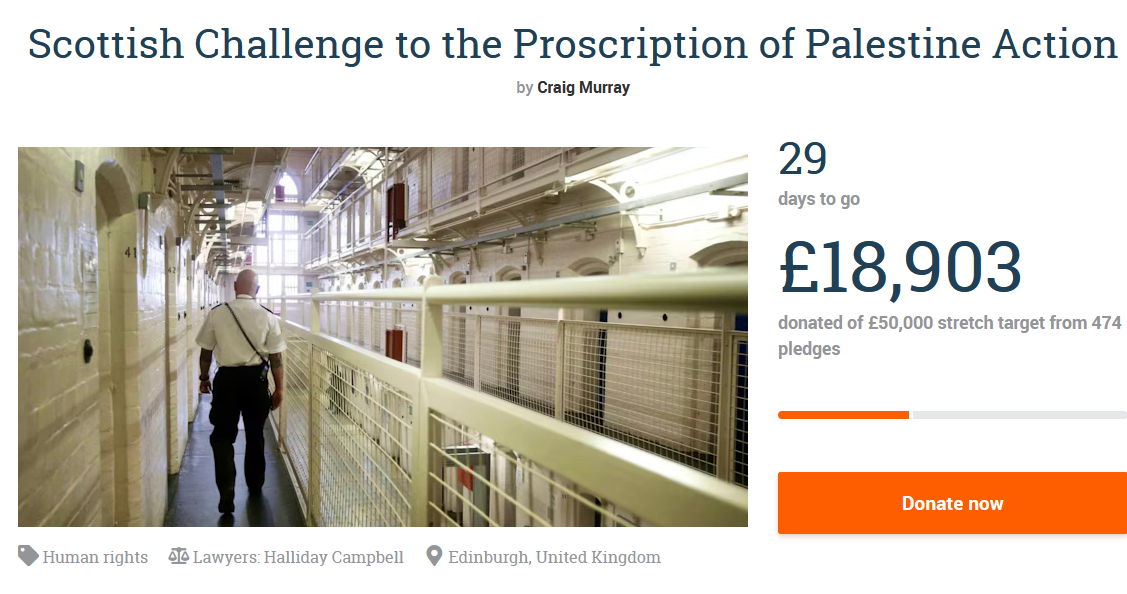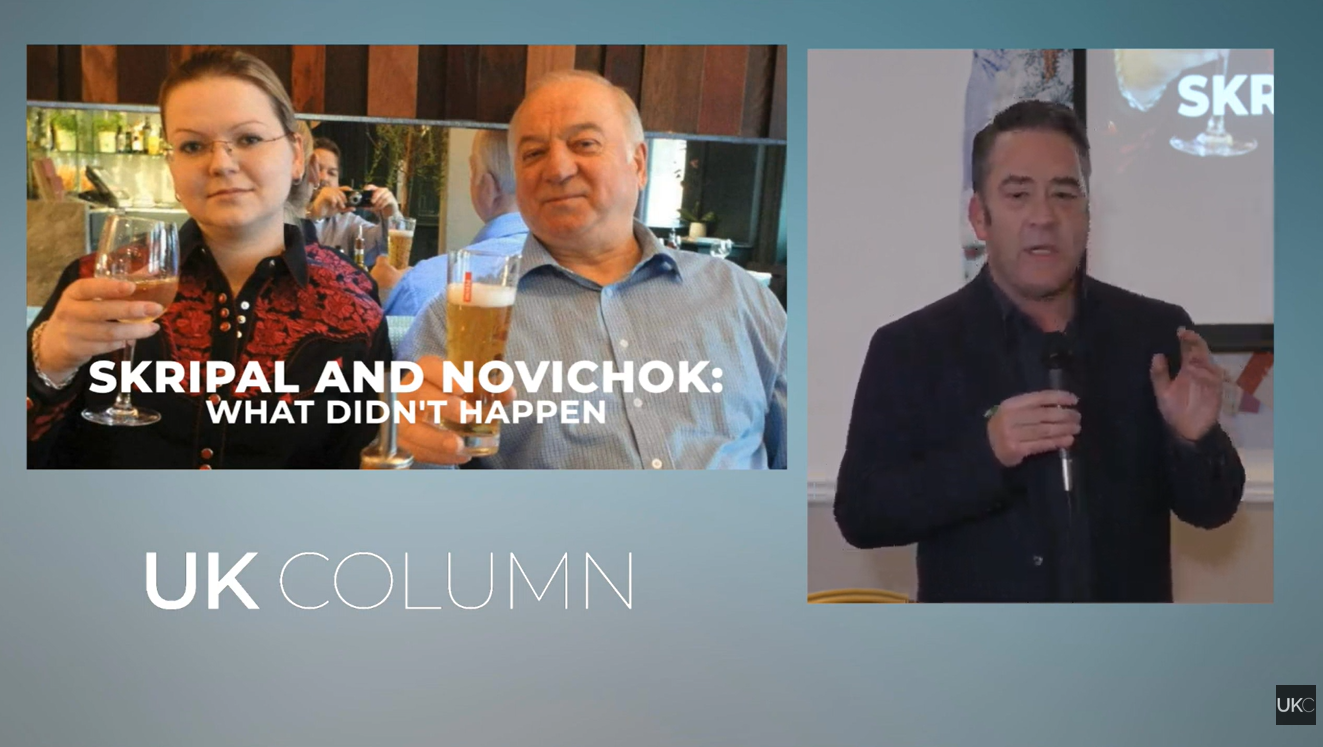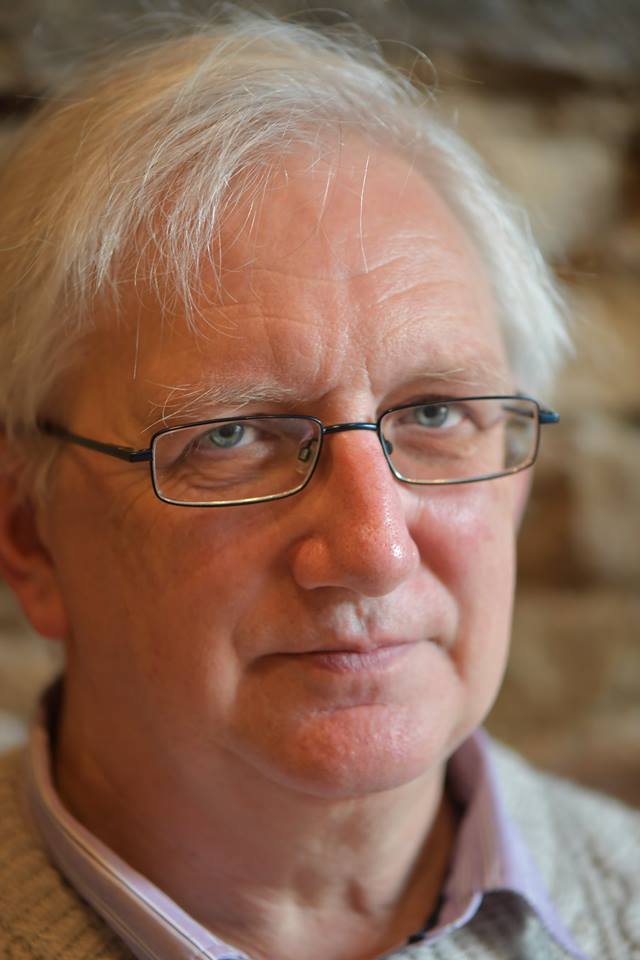HOW TO END THE MADNESS
A guest post from Professor Alf Baird. WHY SCOTLAND’S FERRY SYSTEM IS FAILING AND WHAT NEEDS TO BE DONE TO FIX IT It might come as a shock to learn that one of the world’s most successful ferry designers happens to be a Scotsman, yet his repeated offers to build and invest in ferries in Scotland have been rejected by the Scottish Government and its hapless ferry agencies CMAL and CalMac. Dr. StuartContinue reading "HOW TO END THE MADNESS"
A guest post from Professor Alf Baird.
WHY SCOTLAND’S FERRY SYSTEM IS FAILING AND WHAT NEEDS TO BE DONE TO FIX IT
It might come as a shock to learn that one of the world’s most successful ferry designers happens to be a Scotsman, yet his repeated offers to build and invest in ferries in Scotland have been rejected by the Scottish Government and its hapless ferry agencies CMAL and CalMac. Dr. Stuart Ballantyne, chairman of Australian-based Sea Transport Corp, is also the inventor of the now standard global ferry type known as the ‘medium-speed ropax catamaran’; ‘ropax’ is the industry term for a drive on/off vehicle and passenger ferry.
I had the immense privilege of working with Stuart and his team on numerous ferry projects and studies over the past thirty years. As a maritime economist, my job was to study the feasibility of ferries and other ship types on different shipping routes worldwide, for public and private sector clients and research funding agencies including the European Commission and Nippon Foundation. Being an academic I also developed and published theoretical frameworks to assist with ferry design and operational analyses and assessments.

Stuart Ballantyne, Chair of Sea Transport Corporation
Over this period I was lucky enough to work with several of the best international designers and builders of ferries in all sectors of the business covering: small, medium and large ferries, passenger-only ferries, passenger and vehicles (ropax)ferries, cruise-ferries, high-speed and medium-speed ferries, steel and aluminium hulls or a combination of both, as well as freight-only ferries, pure car carriers etc.
This included studies on the smallest car ferries, such as the 2-car capacity ‘Cromarty Rose’ for which the recommendation was to strip away part of the cabin superstructure in order to increase car capacity by 50%, to load 3 cars! And some of the largest, such as the 200m+ long, 50,000 tonne, 2000+passenger, 500-cars/150+ trucks cruise-ferries now running out of Barcelona and Genoa to various destinations throughout the Mediterranean. Numerous ferry services were initially started under the Italian Government’s ‘Autostradedel Mare’ initiative to shift trucks from road to sea, which led in turn to my involvement in helping develop the European Commission’s ‘Motorways of the Sea’ (MoS) policy covering modal shift on all sea areas in Europe.
I was also involved in studies on the fastest ferries too, such as the innovative 40+ knot HSS (high-speed sea service) fleet designed and built by Stena of Gothenburg. The securing of the 2 x 29-knot brand new Superfast cruise ferries for the Rosyth-Zeebrugge service, which started in May 2002, was the outcome of another EU funded study I led, but more on that particular story some other time, and why the service ended prematurely.
In what we might call the ‘small-to-medium’ ropax ferry sector, that is vehicle ferries between 30m-130m in length, and medium-speed (i.e. speeds below 24 knots), Stuart Ballantyne has developed a world leading product in his steel-hull catamaran designs. What I mean by this is that nobody else is able to get anywhere close to his designs in terms of vessel capital and operating cost for a ferry of similar loading capacity and service speed. His is the leading and increasingly standardised solution, designed and built to operate on any ferry route. A more rapid build time is another big advantageof Stuart’s proven designs.
This explains why Stuart’s ferry designs, which his company also manages the building of in different shipyards under license, have been sold worldwide, including in the Americas and Caribbean, Europe, Mid-East, Asia, and of course Australasia and Polynesia where multihulls (catamarans and trimarans) have been around for a long time.
I worked on various studies and advised ferry operators who subsequently purchased and now operate Stuart’s ferries safely, reliably and profitably. This includes operations in such diverse markets as Oman, Philippines, and Orkney. It is no accident that Stuart is a former chair of the global ferry industry association – Interferry – and was behind the creation of the World Ferry Safety Association, his designs being the safest on the market. His ferry industry expertise and success is recognised globally, and more than merits the honorary doctorate he was awarded by his alma mater, Strathclyde University, where he initially studied naval architecture after a career at sea.
The Stuart Ballantyne/Sea Transport Corp designed 70m/75-car capacity medium-speed ropax catamaran mv ‘Pentalina’, owned and operated by Pentland Ferries

Stuart has tried many times to convince the Scottish Government and its ferry agencies CMAL and CalMac to invest in his world-beating designs. His standard medium-speed, 100-car capacity catamaran ferry design costs only around £15 million to build, yet the Scottish Government are spending more than three times as much – £50 million – for similar capacity and speed, in-house specified monohull ferries. That’s a massive difference in anyone’s book. In addition, operating costs of the catamaran are half that of the monohull, which in aggregate represents an even bigger saving – £100+ million per vessel – over the expected 25 year life of a ferry. Residual value of the lower cost catamaran is also far superior.
A lesser power requirement for the catamaran, a function of its much lower displacement and hence higher efficiency carrying the same payload, means that fuel consumed and engine emissions are about half that of a CMAL ferry. That suggests a change to catamarans would also help reduce CalMac’s annual operating subsidy, which currently stands at over £100 million per annum, halving emissions at the same time. With lower powered craft there is also greater scope to move to zero emissions sooner using battery and/or other energy sources such as methanol or hydrogen.
The two CMAL/CalMac specified ferries currently still under construction at Ferguson’s, a yard now owned by the Scottish Government, may eventually cost as much as £150 million each, or £300 million in total. £300 million is more than enough to build 20 ferries of Stuart’s larger 100-car capacity Lloyds Register classed designs, or sufficient to replace the entire 31-ship CalMac fleet with a mix of smaller and larger sizes of proven, low-cost, medium-speed ferries.
From an international ferry industry perspective, what the Scottish Government and its ferry agencies are doing seems like economic and commercial madness. The Holyrood committee of MSP’s investigating Scottish Government ferries procurement were right to describe the ongoing delay and cost overruns debacle surrounding CMAL ferry hulls 801/02 as a ‘catastrophic failure’. However, the real worry is that those same people responsible for that ‘catastrophic failure’, as reflecting the absence of any accountability in the matter, appear to be about to do more of the same, unless a different approach is taken.
It takes half the time to build one of Stuart’s proven ferry designs than a traditional ‘heavy displacement’ CalMac in-house specified boat. This is because the latter is always a one-off bespoke design, full of ill-considered compromises and unnecessary add-ons, which translates into extra materials, a lot of extra weight, and hence added power needed, plus an inefficient hull form; which is a big added cost and risk factor, as anyone can readily see with the two delayed boats at Ferguson’s.
CalMac’s in-house specified, one-off, heavy displacement monohull ferries therefore take twice as long to build as a standard production line design (e.g. 4 years for Finlaggan, 3 years for Loch Seaforth), whilst the two CMAL ships still under construction at Ferguson’s have already taken around 5-6 years and are nowhere near completion, all at enormous added and unnecessary cost to the taxpayer. In sharp contrast, Stuart’s proven, high-efficiency designs take just 18-24 months to build for the biggest boats, even less for smaller versions.
We might imagine for a moment the challenge and risks in designing and building an entirely new car model, which is twice as heavy as standard models, as opposed to simply buying a proven, guaranteed Ford Fiesta from a car showroom for a third of the price. CMAL/CalMac and the Scottish Government opt to do the former, which explains why it costs three times more and results in horrendous ongoing problems, with added risks and costs over the ship’s lifetime. This also helps explain why Scotland has the highest ferry subsidies in the world and simultaneously one of the most outdated and irregular ferry fleets.
From a maritime economics perspective it is relatively easy to demonstrate how things could be done much better and at lower cost based on superior proven systems and ferry designs. For example, the thirty new ferries (yes 30!), each with 55-car capacity, which Stuart’s company has been building for operations along both east and west coasts of the Philippine archipelago have been rapidly coming on stream, with at least 2 ships being delivered annually as the norm, vessel numbers 19 and 20 recently entering service there. Here the operator also benefits from significant economies of scale in standardised ferry production, keeping the cost of each new ship even lower.
That contract is for what is now the biggest ferry company in the Philippines, the latter working in collaboration with national bus operator Philtranco to provide a truly integrated national transport system as part of the government’s national Nautical Highway Project. Next stage in the company’s development plan is to build even more catamaran ferries for start-up of new international connections.
Clearly, Scotland can learn a great deal from the Philippines and elsewhere about how to develop an advanced ferry transport system, and where the highest levels of efficiency and commercial success is built around the practical and competitive ferry designs of a very skilled Scottish naval architect.
One of the 30 ferries Stuart Ballantyne’s company has designed and is building for the Philippines

Stuart’s company, which has enormous global experience and learning in the ferry sector, has several times offered Scottish Government Ministers and officials the opportunity to build under license in Scotland his successful, proven, low-cost,advanced design of ferries, which are world leading in terms of efficiency and low emissions. That offer has been repeatedly rejected in favour of CMAL/CalMac’s far more costly and clearly riskier, in-house specified, one-off ferry designs; the latter are ferry specifications that nobody else anywhere is copying, far less building, and for good reason –they are simply terrible boats, especially in an economic and business sense, as well as environmentally. That also means they are bad news for the Scottish taxpayer, and for ferry users, which reflects the present reality and widespread dissatisfaction with current ferry operations.
Several island ferry user groups, notably Arran and Mull & Iona, have made robust business cases pleading for the Scottish Government to acquire Stuart’s far superior proven ferries. But officials and Ministers continue to refuse these reasonable requests. Island communities are left with a poor and ever deteriorating service as a result, most with little hope of seeing a new ferry in years.
As would be expected of a successful entrepreneur, Ferguson’s former owner Jim McColl expressed strong interest in working with Stuart’s company to build 30 new lower-cost catamarans needed for CalMac under license at Ferguson’s. Jim McColl was also aware that there is a desperate need to build a further 20 new, small-medium size ferries for Orkney and Shetland inter-island routes, giving a total order book potential for at least 50 ferries in Scotland alone. But the blockage on progress remains Scotland’s national ferry agencies, CMAL and CalMac and the Scottish Government, and the RMT union, who still insist on their own in-house ferry specifications and hence far more costly, heavy displacement monohull ferries.

One of several Stuart Ballantyne designed ferriesoperating in Venezuela and the Caribbean
Meantime, other maritime sectors are rapidly shifting to building catamarans instead of monohulls. This includes hundreds of workboats used in offshore renewables, and in fish farming. Catamarans offer a much wider and hence more stable proven platform, at lower cost to build and operate than a monohull. Stuart Ballantyne’s company also offer its advanced designs for military needs, which it has supplied to various customers including the Indian navy. This means that there are significant opportunities across several maritime sectors for proven catamaran designs, in addition to ferries, and a yard (or yards) in Scotland with this capability and access to the best designs and systems available need never be short of business.
So the offer to build perhaps 50 ferries of arguably the best proven, global, small-medium sized ferry designs, in Scotland, remains blocked by the Scottish Government and its ferry agencies who continue with a preference for their own far more expensive poorly specified boats. This approach inevitably means far fewer new boats will be built, and any that are built will take a lot longer to deliver. CMAL has been unable to deliver even one new ferry a year, which suggests at the current rate they will be unable to replace the present 30-ship CalMac fleet even over the next 30 years, assuming the ferries budget stretches that far. That will only serve to worsen the present unacceptable situation, meaning a continued lack of adequate ferry capacity for the islands, which in turn constrains their economic and social development.
My other related paper on this matter highlights the ‘mediocre meritocracy’ that is making decisions on ferry procurement policy in Scotland, lacking in the right expertise or insights, and how allegiance to another nation’s interests, culture and political/economic ideology may influence priorities and distort decision making, which ultimately serves to undermine Scotland’s interests. And here Alasdair Gray hit on something when he said that too many Scots are lacking in “confidence in their own land and people”.
The Scottish Government has allocated a further £600 million for ferry investment, though with a spending squeeze on the horizon that figure seems unlikely. The government’s intention appears to be to continue spending money on buying a handful of poorly specified, over-expensive, and highly inefficient ferries that take many years more to build and cost much more to operate than proven designs. This practice has been going on for decades and has never delivered an acceptable outcome, and never will. Moreover, future orders under this scenario now look likely to be built outside Scotland (again), leaving a question mark over the future of Ferguson’s.
Alternatively, government could take the more sensible route outlined here, by accepting Stuart Ballantyne’s proposal and building many more ferries of proven designs at much lower cost, all in Scotland. All that would require is to bring in the best global skills and expertise in ship design and build management, which in this case also fortunately happens to be Scottish. Stuart Ballantyne is the Turnaround Director that Ferguson’s (and CMAL) should have had, and still could have.
By adopting the right strategy and putting in place the right expertise, as well as some passion, Scotland has a chance to create and safeguard many more jobs in shipbuilding and the supply chain, as well as rapidly renewing a desperately outmoded national ferry fleet for the long-term benefit of island communities and the wider economy. Such a strategy would also provide a good basis for building export potential for future ferry production based on superior global designs.
This kind of concrete and positive action, however, requires a change in the cultural mindset and therefore a change in the people who make key decisions on ferries, and with that a change in our priorities, with a focus on the national development of Scotland and its people. That is what an independence-minded national government should be about anyway, investing in and building up the competence and confidence of a people and nation. Given the iconic nature and proud history of Clyde shipbuilding, that would seem a good place to start. The opportunity is there; we can either take it, or continue to ignore it, much the same with independence.
MY COMMENTS
Like anyone who watched the Scottish Parliament ”investigation” into the ferry debacle I was astonished at the clear lack of knowledge of some of the participants. it seemed clear to me they had no idea about the issues, were blind and obstructive to ideas and innovation, content to ignore a mountain of evidence that their current plans were a scandalous misuse of public funds for a much inferior and hugely expensive design that was outdated and super expensive to build. That would only offer a much inferior service. We will see what happens now. Are they still blinkered? If they are they should not be in Parliament as they are incapable of defending and promoting the public interest. Indeed, that might well be the root of all our problems, not just with ferries.
I am, as always
YOURS FOR SCOTLAND
BEAT THE CENSORS
Unfortunately a number of pro Indy sites have turned out to be merely pro SNP sites and have blocked a number of bloggers, including myself. We have managed to frustrate these efforts to close us down through our readers sharing our articles and building our audience.Sharing is very important and helps the Independence message to reach a much wider audience. In addition many have taken out free direct subscriptions. I very much appreciate this support.
Free Subscriptions
Are available on the Home and Blog pages of this website. By taking out a subscription you will receive notification of all future posts. You will be most welcome.
What's Your Reaction?











































